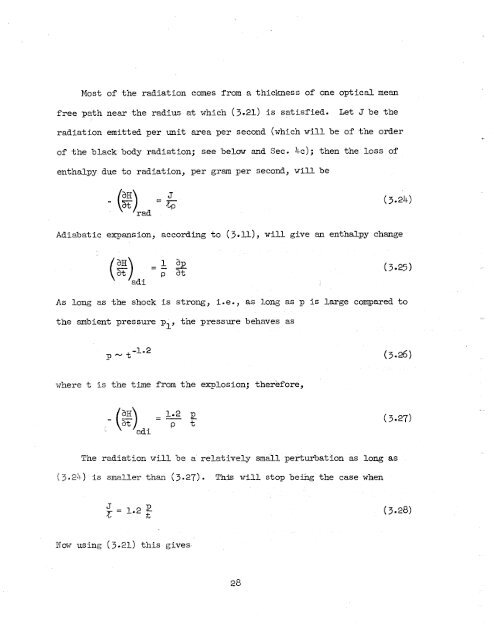Theory of the Fireball
Theory of the Fireball
Theory of the Fireball
You also want an ePaper? Increase the reach of your titles
YUMPU automatically turns print PDFs into web optimized ePapers that Google loves.
Most <strong>of</strong> <strong>the</strong> radiation comes from a tnickness <strong>of</strong> one optical mean<br />
free patn near <strong>the</strong> radius at which ( 3.21) is satisfied. Let J be <strong>the</strong><br />
radiation emitted per unit area per second (which w ill be <strong>of</strong> <strong>the</strong> order<br />
<strong>of</strong> <strong>the</strong> black body radiation; see below and Sec. 4c) ; tnen <strong>the</strong> loss <strong>of</strong><br />
enthalpy due to radiation, per gram per second, will be<br />
J<br />
- = .ep<br />
Adizbatic expansion,<br />
(%)adi -<br />
As long as tne shock<br />
tne ambient pressure<br />
according to ( 3.11), will give an entnalpy change<br />
is strong, i.e.,<br />
pl, <strong>the</strong> pressure<br />
as long as p is large compared to<br />
behaves as<br />
vhere t is <strong>the</strong> time from <strong>the</strong> explosion; <strong>the</strong>rbfore,<br />
1.2 p<br />
,.- @)adi - p t<br />
Tine rzdia-tion will be a relatively smail perturbat ion as long as<br />
( j. 2h.) -is smaller Clan (3.27) . This wil stop be% <strong>the</strong> case when<br />
J P<br />
= 1.2 ,c<br />
28
















